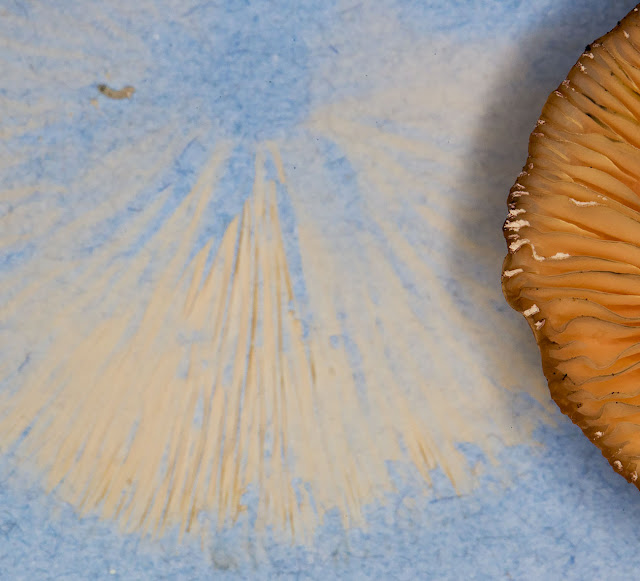 |
| Honey Bee, Apis mellifera, in flight. Gates Green Road, Coney Hall, 21 September 2014. |
Again, tidying up my photo folders, here are some insects feeding on ivy in September. Ivy is the last big feast for many insects, and a bank in flower on a sunny day can always be relied on for an array of photogenic creatures.
I was pleased to catch this bee hovering, so that its body is sharp even though its wings are moving so fast as to be almost invisible. This was taken at 1/180th of a second. It has pollen baskets full of yellow pollen but still seems to be after some more.
Some say that the honey-bee's role as a pollinator is exaggerated because the pollen it collects is packed away in a solid wet lump, and that much is true, as you can see here. But you can also see how much dry pollen is scattered over its head, body and legs. That is perfectly good for future pollinations.
 |
| Hoverfly, Eristalis pertinax. Gates Green Road, Coney Hall. 31 August 2014. |
This Eristalis pertinax is a Dronefly, so called because of its similarity to a male honey bee. In fact it's a hoverfly, and completely harmless. Here it is working over one of the ivy's anthers. Compare this to the honey-bee and you can see that this fly has only a few grains of pollen on its legs.
 |
| Hoverfly, Eristalis tenax. Gates Green Road, Coney Hall, 21 September 2014. |
Though this one, also a pollen-eater, seems to be a bit more messy! It's a closely related species, Eristalis tenax, that is distinguished by its darker lower legs and the vertical row of hairs on its eye. The eye of the other species is hairy all over.
 |
| Hoverfly, Myathropa florea. Gates Green Road, Coney Hall. 31 August 2014. |
Another hoverfly, the photogenic Myathropa florea. This fly has more of an overall honey colour and has a distinctive pattern on its thorax that looks like the Batman logo. (That small white ring in the middle of its thorax is a reflection of my camera's ring flash. The ring flash a great tool and has let me take many good shots, but it has this one drawback.)
You can see the looped vein towards the end of its wing that is the mark of the Eristalini. You can see the same loop on the Eristalis pertinax two pics up, once you know where to look.
 |
| Hoverfly, Syritta pipiens. Gates Green Road, Coney Hall. 31 August 2014. |
Another hoverfly, the smaller Syritta pipiens, from a different group and with quite a different look. It is distinguished by its fat thighs. This one is after the nectar produced by the ivy. Although ivy does not have petals, it produces nectar from a dome-shaped hypanthium.
 |
| Nursery Web Spider, Pisaura mirabilis. Gates Green Road, Coney Hall, 21 September 2014. |
While I was photographing the insects on the ivy, I was pleased to see this very smart Nursery Web Spider on the nettles below. As with all spiders, this creature has interesting and often startling mating habits, and the male will sometimes pretend to be dead to get close enough to mate.
























